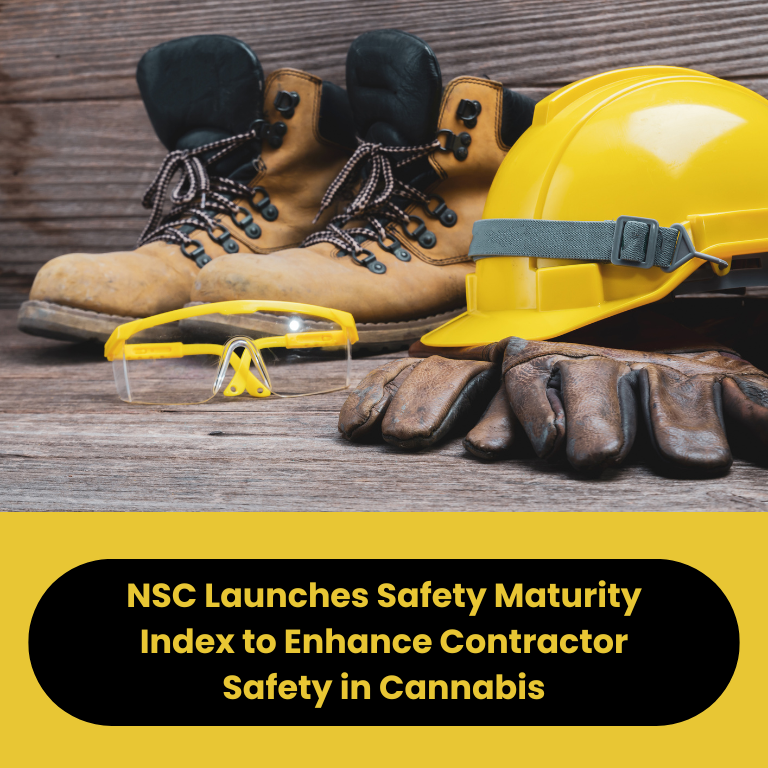NSC’s Safety Maturity Index: Ensuring Safer Cannabis Operations

In the rapidly evolving cannabis industry, ensuring the safety of workers and contractors is of paramount importance. As the sector grows, so does the need for effective safety management systems. Traditional contractor safety models have often fallen short, lacking the leading indicators and actionable insights necessary to drive transformational change. Recognizing this gap, the National Safety Council (NSC) has partnered with Avetta to introduce the Safety Maturity Index (SMI), a groundbreaking tool designed to enhance contractor safety in the cannabis sector and beyond.
Understanding the Need for a New Approach
The cannabis industry is unique, characterized by its own set of challenges, regulatory requirements, and safety concerns. With its complex supply chains and evolving operational standards, cannabis contractors face significant risks, including serious injuries and fatalities (SIFs). Traditional safety models that rely heavily on historical performance data have proven inadequate, as they fail to capture the real-time conditions and behaviors that influence safety outcomes.
The NSC’s initiative aims to shift this paradigm. By moving beyond past performance metrics, the SMI focuses on a systems-based approach that targets health and safety weaknesses within the supply chain. As Don Dama, executive vice president of Sales and Marketing at the NSC, states, “By offering a holistic approach to monitor contractors’ safety and maturity, we empower the industry to deploy more effective systems and safeguards to reduce SIFs in the future.”
The Structure of the Safety Maturity Index
The SMI is grounded in over 15 years of NSC research, combining best practices and insights from various industries. It evaluates contractor safety management systems (SMS) across five primary categories:
Safety Leadership & Structure: This category assesses the leadership practices, incentives, and organizational structures that promote positive safety outcomes. Strong leadership is crucial in instilling a culture of safety and accountability.
Hazard Identification & Controls: Effective safety management requires the ability to identify potential hazards and implement appropriate controls. This category evaluates how well organizations recognize and mitigate risks associated with serious injuries and fatalities.
Worker Training & Competency: Proper training is essential for ensuring that workers understand their roles and responsibilities. This category measures how organizations identify training needs and verify worker competency.
Incident Management & Response: Organizations must have robust systems in place for investigating incidents, learning from them, and responding effectively. This category examines the methodologies used to manage incidents and improve safety practices.
Improvements & Communications: Effective communication is key to distributing safety knowledge and improvements across all levels of an organization. This category evaluates the tools and processes in place for sharing safety information.
Each category is assessed using statistically relevant questions, allowing organizations to derive actionable insights that help manage risks, prevent accidents, and continually improve safety standards.
A Shift from Compliance to Improvement
Historically, contractor prequalification has centered on compliance and historical performance. Taylor Allis, CPO of Avetta, highlights this shift: “For decades, contractor prequalification has focused on historical performance and policy audits. This standard needs to evolve, as it’s been proven that past performance isn’t a reliable indicator of future safety.” The SMI marks a pivotal change in this approach, emphasizing continuous improvement over mere compliance.
The index allows organizations to engage in meaningful discussions about contractor safety, focusing on how to enhance safety practices rather than simply meeting regulatory requirements. This proactive approach is particularly valuable in the cannabis industry, where regulations can be complex and evolving.
Enhancing Contractor Relationships
By implementing the SMI, cannabis companies can foster stronger relationships with their contractors. The index provides a framework for collaborative safety discussions, enabling organizations to better understand their contractors’ safety capabilities. This understanding can lead to more informed decisions when selecting contractors and can ultimately enhance the safety culture across the entire supply chain.
Additionally, as organizations adopt the SMI, they can identify areas for improvement and implement targeted interventions. This not only benefits the contractors but also enhances the overall safety reputation of the cannabis industry, which has faced scrutiny due to safety incidents in the past.
The Future of Cannabis Contractor Safety
As the cannabis industry continues to expand, the introduction of the Safety Maturity Index represents a significant advancement in contractor safety management. With its emphasis on systems-based evaluation and continuous improvement, the SMI empowers organizations to tackle safety challenges more effectively.
The integration of recognized industry standards, such as ISO 45001 and ANSI Z-10, further strengthens the credibility of the SMI. By adhering to these standards, organizations can ensure that their safety management practices align with global best practices, enhancing their operational efficiency and safety performance.
Moreover, research indicates that the presence or absence of SMS procedures and practices is a strong leading indicator of an organization’s safety performance. By focusing on these leading indicators, the SMI helps cannabis companies prioritize safety investments and initiatives that yield tangible results.
The Safety Maturity Index introduced by the NSC is not just another safety compliance tool; it is a comprehensive framework designed to transform how cannabis contractors approach safety management. By shifting the focus from historical performance to continuous improvement, the SMI empowers organizations to create safer work environments, reduce serious injuries and fatalities, and foster a culture of safety.
As the cannabis industry matures, the adoption of innovative safety measures like the SMI will be crucial in building a resilient and responsible industry. By prioritizing safety and actively engaging in improvement efforts, cannabis companies can not only protect their workers but also enhance their reputations and sustainability in a competitive market. With tools like the Safety Maturity Index, the future of cannabis contractor safety looks promising, paving the way for a safer and more prosperous industry.











